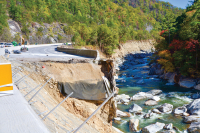Just the dregs
Those pitching the plan to sell off pieces of the national forest claim the parcels on the list are inconsequential.
The tracts on the chopping block are small, isolated islands surrounded by privately-owned land, don’t contribute to forest ecology, aren’t used for recreation, are too small for logging and are generally more trouble than they’re worth for the forest service, say those who proposed the sale.
But this criteria was loosely applied when drawing up the list for Western North Carolina
There are two tracts in WNC bigger than 600 acres. Half a dozen are bigger than 200 acres, and another dozen are more than 100 acres.
The list of tracts to sell in WNC was created by staff in the National Forest Service’s Atlanta office. The Pisgah and Nantahala national forest officials were not involved in choosing the tracts.
Two weeks before the plan became public, the list-makers in Atlanta shared their list with a handful of people in the Asheville office of the National Forest Service, but allowed little opportunity to modify it.
Forest service staff in the field offices did not know anything about the plan until the day it was made public. Many are not happy about the proposal and disagree with the list.
Media spokespeople in both Washington, D.C., and Atlanta said the local forest service was a partner in creating the list of lands. The D.C. spokesperson said the local national forest staff came up with the list of eligible tracts in its own forest, while the Atlanta spokesperson said the local forest service was given a chance to hone and alter the list that was developed in Atlanta.
Meanwhile, Terry Syden, spokesperson for the Nantahala and Pisgah national forests in Asheville, said they were privy only to a “brief local review.” The local forest service is questioning the inclusion of some tracts on the list.
“We understand there are some tracts on the map that don’t meet the intent of the criteria that was used,” said Syden. “There are some tracts on this list that don’t match up with the intent to remove isolated tracts that are difficult to maintain.”
Syden said the list should be considered a “candidate pool of possible tracts” that could be altered based on public comment.
Another indication that the list wasn’t well vetted is the inclusion of more than 400 acres adjacent to the Needmore Tract, a 4,500-acre area along the Little Tennessee River that was preserved following a massive public push that raised $20 million in private donations and state money over several years to save the land from pending development.
In Western North Carolina, the nature of national forests is a cobbled patchwork. Land clear cut by timber and paper companies was of no use to them anymore, or to anyone else for that matter, so the federal government bought it at a fire sale price to create the national forests. The result was non-uniform boundaries, far from the story out West where straight lines were drawn around giant quadrants on the map and designated national forest.
Because WNC’s national forests aren’t neat and tidy, but are made of lots of disparate tracts, WNC was hit hardest by the list-makers. A greater percentage of North Carolina’s national forest made the list than any other state.





